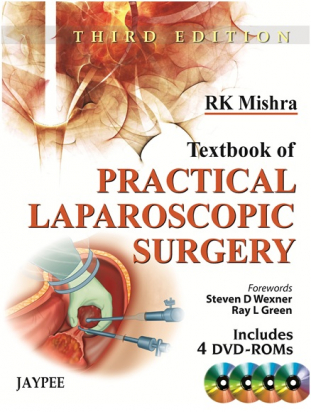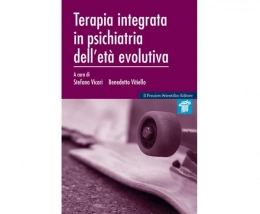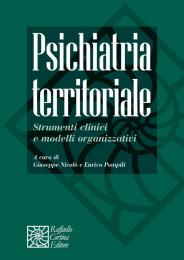Non ci sono recensioni
Laparoscopic surgery is a minimally invasive technique whereby a small incision is made in the abdomen allowing a surgeon to look inside the body and perform certain operations.
This comprehensive guide brings surgeons fully up to date with the latest procedures in laparoscopic surgery. Beginning with an introduction to the technique (equipment, sterilisation, dissection, suturing and anaesthesia), the following sections discuss general surgical procedures, gynaecological procedures, paediatric laparoscopy and laparoscopic urology.
Each section describes numerous different procedures, with the final chapters discussing complications, training, robotic surgery, the future of laparoscopic surgery and more.
This new edition includes more than 1220 colour images and illustrations and a DVD depicting surgical procedures.
Key points
- Comprehensive, fully updated guide to laparoscopic surgery
- Discusses numerous procedures in general, gynaecological, paediatric and urological laparoscopic surgery
- More than 1220 colour images and illustrations
- Includes DVD of laparoscopic surgery procedures
- Previous edition published in 2009
TABLE OF CONTENTS
SECTION 1: ESSENTIALS OF LAPAROSCOPY
1. Chronological Advances in Minimal Access Surgery ......................................................................................... 3
2. Laparoscopic Imaging Systems ............................................................................................................................ 9
• Laparoscopic Trolley 9
• Imaging Systems 9
• Light Source 10
• Light Cable 14
• Telescope 18
• Laparoscopic Camera 20
• Laparoscopic Video Monitor 22
• Television Systems 23
• Three-dimensional Vision 27
• Invention of Ideal Shadow in Laparoscopic Surgery 29
• Three-dimensional Video Systems 29
3. Laparoscopic Equipment and Instrument .......................................................................................................... 32
• Insufflation System 32
• Suction/irrigation System 32
• Energy Source System 33
• Laparoscopic Working Instrument 34
• Port Access Instrument 35
• Laparoscopic Hand Instruments 36
• Outer Sheath of Hand Instrument 38
• Instruments for Sharp Dissection 39
• Types of Laparoscopic Scissors 40
• Endoknife (Scalpel) 42
• Coagulating and Dissecting Electrodes 42
• Needle Holders 43
• Knot Pusher 44
• Laparoscopic Clip Applicator 44
4. Sterilization of Laparoscopic Instruments ......................................................................................................... 51
• History of Sterilization 51
• Legislation in Sterilization 51
• Ultrasonic Technology for Cleaning 52
5. Anesthesia in Laparoscopic Surgery ................................................................................................................. 57
• Evaluation and Preparation of Patient for Laparoscopic Surgery 57
• Physiological Changes During Laparoscopy 58
• Regional Anesthesia 59
• General Anesthesia 59
• Local Anesthesia 60
• Intraoperative Complications 60
6. Abdominal Access Techniques .......................................................................................................................... 67
• Closed Access 67
• Open Access 67
• Closed Access Technique 68
• Introduction of Veress Needle 73
• Primary Trocar Insertion 77
• Pneumoperitoneum in Special Conditions 84
• Entry in Cases of Morbid Obesity 85
• Port Closure Techniques 88
7. Principle of Laparoscopic Port Position ............................................................................................................ 95
• Primary Port Position 95
• Secondary Port Position 95
• First Decide the Target 95
• Port Position in Various Surgeries 97
• Drawbacks of Incorrect Port Position 97
8. Laparoscopic Dissection Techniques .............................................................................................................. 103
• Types of Laparoscopic Dissection 103
• Blunt Dissection 103
• Sharp Dissection 104
• Scissors Dissection 105
• High Frequency Electrosurgical Dissection 105
• Use of the Diathermy Hook 108
• Ultrasonic Dissection 115
• High Velocity Water Jet Dissection 116
• Laser Dissection 116
• Cryotherapy and Radiofrequency Ablation 117
9. Laparoscopic Tissue Approximation Techniques........................................................................................... 120
• Laparoscopic Suturing and Knotting 120
• Laparoscopic Needle 121
• Roeder's Knot 122
• The Meltzer Slip Knot 126
• The Tayside Knot 126
• Using a Pretied Loop 129
• Extracorporeal Knot for Continuous Structure 130
• Cat Eye Stone 131
• Laparoscopic Internal Suturing 131
• Instrumentation 131
• Continuous Suturing 133
• Applications 133
• Interrupted Sutures 136
• Techniques to Assist in Control of Bleeding 137
10. Hand-assisted Laparoscopic Surgery .............................................................................................................. 140
• Hand Port Devices 142
• Omni Port 143
• Indication of HALS 143
• Advantage of HALS 143
• Limitations of HALS 143
• Lapdisc Hand Access Device 144
• Warnings and Precautions 144
• Future Prospect of HALS 144
11. Tissue Retrieval Technique ............................................................................................................................... 149
• Endobags 149
• Colpotomy 151
• Hand-assisted Laparoscopic Surgery 153
• Morcellator 154
12. Laparoscopic Port Closure Technique ............................................................................................................. 158
• Withdrawal of Instrument and Ports 159
SECTION 2: LAPAROSCOPIC GENERAL SURGICAL PROCEDURES
13. Laparoscopic Cholecystectomy ....................................................................................................................... 165
• Advantage of Laparoscopic Approach 166
• Exposure of Gallbladder and Cystic Pedicle 166
• Adhesiolysis 168
• Dissection of Cystic Pedicle 168
• Intraoperative Ultrasonography 171
• Complications of Laparoscopic Cholecystectomy 177
• Lap Chole and CBD Injury 178
• Type of CBD Injury 180
• How to Avoid Injury 181
14. Laparoscopic CBD Exploration ......................................................................................................................... 184
• Intraoperative Cholangiography (IOC) 184
• Laparoscopic Ultrasonography (LUS) 184
• Laparoscopic Extraction of Common Bile Duct Stones 185
• Procedure 186
15. Laparoscopic Appendicectomy ........................................................................................................................ 195
• Laparoscopic Anatomy 195
• Advantage of Laparoscopic Appendectomy 195
• Alternative Port and Theater Set-up 196
• Risk Factors in Laparoscopic Appendectomy 199
16. Laparoscopic Repair of Inguinal Hernia ........................................................................................................... 205
• Laparoscopic Anatomy 205
• Indications of Laparoscopic Repair of Hernia 207
• Advantages of Laparoscopic Approach 207
• Disadvantages of Open Method 207
• Transabdominal Preperitoneal Repair of Inguinal Hernia 208
• Procedure of TAPP 209
• Totally Extraperitoneal Hernia Repair 213
• Advantage of TEP 213
• Disadvantage of Preperitoneal repair 213
• Laparoscopic Repair of Femoral Hernia 216
• Complications of Laparoscopic Hernia Repair 217
• Intraoperative Complications and Precaution 218
• Postoperative Complications 219
• Postoperative Recovery 221
• Recurrence 221
• Causes of Recurrence in Laparoscopic Inguinal Hernia Repair 221
• Recommendation 222
17. Laparoscopic Repair of Ventral Hernia ............................................................................................................ 225
• Laparoscopic Anatomy 226
• Operative Procedure 226
• Choice of Mesh in Ventral Hernia 230
• Surgisis 231
• Aalloderm 231
• Proceed 231
• The Second Technique 231
• Complications 232
• Discussion 232
• Mesh Placement and Fixation 233
• Bowel Injury 234
• Adhesion 235
• Infection 235
• Seroma 235
• Postoperative Pain 236
• Obesity 236
• Recurrence 236
18. Laparoscopic Repair of Hiatus Hernia ............................................................................................................. 239
• Symptoms of Type II Hiatus Hernia 240
• Operative Procedure of Giant Paraesophageal Hernia 241
• Recommendation to Avoid Complication 241
19. Laparoscopic Repair of Duodenal Perforation ................................................................................................ 245
• Laparoscopic Approach has Advantages 246
• Operative Technique 246
• Discussion 248
20. Laparoscopic Fundoplication ........................................................................................................................... 251
• Pathophysiology 251
• Operative Technique 253
• Procedure 254
21. Sleeve Gastrectomy ........................................................................................................................................... 262
• Weight Loss 270
22. Laparoscopic Splenectomy ............................................................................................................................... 274
• Operating Room Set-up and Patient Position 274
23. Laparoscopic Management of Hepaticopancreatic Diseases ........................................................................ 281
• Technique of Laparoscopic Management of Hydatid Cystic Liver 281
• Laparoscopic Liver Resection 282
• Hepatic Resections 284
• Laparoscopic Pancreatic Surgery 286
• Laparoscopic Pseudocyst Drainage 289
24. Diagnostic Laparoscopy .................................................................................................................................... 292
• Indications 292
• Contraindications 293
• Laparoscopic Anatomy 293
• Role of Laparoscopy in Ascites 295
• Diagnostic Laparoscopy 299
25. Laparoscopic Small Bowel Surgery ................................................................................................................. 304
• Laparoscopic Resection of Small Bowel 304
• Ileocolectomy 305
26. Laparoscopic Colorectal Surgery ..................................................................................................................... 310
• Sigmoidectomy 318
• Low Anterior Resection 330
• Abdominoperineal Resection 334
• Hartmann Reversal 336
• Resection Rectopexy 338
• Wells or Marlex Rectopexy 340
• Tips and Tricks 343
27. Laparoscopic Adhesiolysis ............................................................................................................................... 346
• Contraindications 346
• Laparoscopic Adhesiolysis 347
SECTION 3: LAPAROSCOPIC GYNECOLOGICAL PROCEDURES
28. Laparoscopic Sterilization ................................................................................................................................. 353
• Laparoscopic Anatomy 353
• Contraindications 354
• Bipolar Coagulation 355
• Falope Ring Application 355
29. Laparoscopic Ovarian Surgery ......................................................................................................................... 359
• Laparoscopic Ovarian Anatomy 359
• Laparoscopic Management of Ovarian Cyst 360
• Laparoscopic Oophorectomy 363
• Contraindications 363
30. Laparoscopic Tubal Surgery ............................................................................................................................. 368
• Laparoscopic Tubal Anatomy 368
• Operative Procedure 369
31. Laparoscopic Management of Ectopic Pregnancy.......................................................................................... 376
• Ectopic Pregnancy 376
• Discussion 379
• Laparoscopy vs Laparotomy in Treatment of Ectopic Pregnancies 380
32. Laparoscopic Surgery in Pregnancy: Precautions and Complications ........................................................ 381
• Physiological Changes in Pregnancy 382
• Fetal Consideration 383
• Effects of Pneumoperitoneum in Pregnancy during Laparoscopic Procedure 383
• Criteria for Patient Selection 383
• Advantages of Laparoscopy in Pregnancy 383
• Discussion 384
33. Laparoscopic Management of Endometriosis ................................................................................................. 388
• Peritoneal Implants 389
• Resection of Ovarian Endometriosis 390
• Genitourinary Endometriosis 391
• Gastrointestinal Endometriosis 391
• Diaphragmatic Endometriosis 391
34. Laparoscopic Hysterectomy ............................................................................................................................. 392
• Laparoscopic Anatomy of Uterus 392
• Classification 394
• Discussion 399
35. Laparoscopic Myomectomy .............................................................................................................................. 403
• Procedure 403
• Removal of Myoma 404
36. Laparoscopic Management of Stress Incontinence ........................................................................................ 408
• Pathophysiology 408
37. Minimally Invasive Sling Operation for Stress Incontinence .......................................................................... 413
• Tension-free Vaginal Tape 413
• Contraindications of Tension-free Vaginal Tape and Transobturator Tape 418
• Warnings and Precautions 419
38. Laparoscopic Sacral Colpopexy ....................................................................................................................... 422
• Indications 422
• Operative Procedure 422
• Vesicovaginal Fistula Repair 424
• Technique 424
39. Essentials of Hysteroscopy ............................................................................................................................... 428
• Indications 428
• Contraindications 428
• History 428
• Delivery Devices 428
• Distending Media 428
• Fluid Monitoring 428
• Excessive Fluid Absorption 429
SECTION 4: LAPAROSCOPIC UROLOGY
40. Ureteral Injury and Laparoscopy....................................................................................................................... 443
• Ureteral Injuries 443
• Frequency of Ureteral Injury 443
• Level of Ureteral Injuries 444
• Prevention of Ureteral Injury 444
• Recognition of Ureteral Injury 445
41. Laparoscopic Urological Procedure ................................................................................................................. 457
• Laparoscopic Nephrectomy 457
• Laparoscopic Varicocelectomy 458
• Laparoscopic Retroperitoneal Node Dissection 459
• Laparoscopic Management of Lymphoceles 459
• Laparoscopic Ureterolysis 460
• Laparoscopic Ileal Conduit 460
• Laparoscopic Pelvic Lymphadenectomy 460
SECTION 5: PEDIATRIC LAPAROSCOPY
42. Laparoscopic Pediatric Surgery........................................................................................................................ 465
• Laparoscopy in Infants and Children 465
• Laparoscopic Repair of Pediatric Hernia 468
• Laparoscopic Pediatric Urology 470
• Laparoscopy for the Impalpable Undescended Testicle of Intersex Evaluation 471
• Other Laparoscopic Pediatric Urological Procedures 473
SECTION 6: MISCELLANEOUS
43. Other Minimal Access Surgical Procedures .................................................................................................... 481
• Two Port Cholecystectomy 481
• Two Port Repair of Ventral Hernia 486
• Historical Perspective 492
• Surgical Technique 493
• Minimal Access Neck Surgery 496
• Minimal Access Surgery in Orthopedic Surgery 499
• Arthroscopic Surgery in Sports Related Injuries and other Pathology 500
• Minimal Access Surgery in Orthopedic Trauma 501
• Spine Surgery and Arthroscopy 502
• Bone Endoscopy and Tumors 502
44. Minimal Access Bariatric Surgery..................................................................................................................... 505
• Laparoscopic Treatment for Morbid Obesity 505
• Sleeve Gastrectomy 510
45. Complications of Minimal Access Surgery ...................................................................................................... 513
• Anesthetic and Medical Complications in Laparoscopy 513
• Hemorrhagic Complications 519
• Gastrointestinal Complications 522
• Injury to Bladder 524
• Neurologic Injury 526
• Dissection and Thermal Injury 527
• Incisional Hernia 527
• Infection 528
46. Role of Training in Minimal Access Surgery.................................................................................................... 532
• Training—Objectives, Needs, and Means 534
• Present Training in Laparoscopy 534
• Learning Curve in Laparoscopy 537




